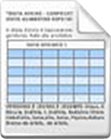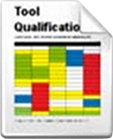Over the past two decades, China's domestically produced large aircraft and aerospace industries have entered a period of rapid development, and the research and development technologies for aviation and aerospace electronic software systems have also advanced significantly. As is well known, the reliability of aviation and aerospace electronic and software systems is critical to the safety of aircraft and spacecraft. As a result, these fields have established comprehensive standards to regulate the entire R&D process of electronic software systems. These standards are enforced through audits and certifications by third-party authoritative institutions, ultimately ensuring the long-term safe and reliable operation of aircraft and spacecraft.
In the field of civil aviation electronics, RTCA and EUROCAE collaborated to develop the DO-178B standard, which was first published by RTCA in December 1992. This document outlines guidelines for organizations developing onboard equipment and certification authorities (such as the FAA, EASA, and Transport Canada). EUROCAE published the document in the form of ED-12B. After nearly two decades of evolution, DO-178C, which was approved by RTCA in late 2011, became the new standard for the development and certification of commercial aviation electronic software systems and will gradually replace DO-178B. Both DO-178B and DO-178C specify the processes that must be followed in the development of onboard systems, including requirements for each stage of software development and testing, particularly the critical requirement for achieving structural coverage in testing based on high-level and low-level software requirements.
Similarly, China's aerospace, military aviation, and defense industries have also released relevant standards and specifications that meet domestic needs, such as GJB-5000A and GJB-438B. Even though international standards and domestic standards focus on different application areas, they are very similar in terms of core concepts and methods.
Therefore, how to efficiently meet these DO-178B, DO-178C, GJB-5000A, and other standards during software development and testing while ensuring system reliability and correctness has become a top priority for software R&D research institutes and related enterprises.

Demands and Challenges
-
What are the differences between the testing requirements and methods for civil aircraft systems and military aircraft systems?
-
With so many standards, how can the complex requirements for software development and testing be implemented?
-
How are traditional black-box, white-box, and gray-box testing applied in aerospace and defense software systems?
-
What automated methods can improve software design and testing efficiency?
-
Have purchased many development and testing tools. Which one is the most practical?
-
What are the requirements of DO-178B and DO-178C for auxiliary automation tools?
Solutions
-
Structural coverage analysis, using VectorCAST to perfectly meet the complete structural coverage required for airworthiness certification.
-
Coupling verification, using VectorCAST to meet DO-178C requirements for coupling verification.
-
White box testing, using Klocwork and VectorCAST to efficiently complete code static analysis, unit and module integration testing.
-
Black-box testing, provided by Vector's HiL system test platform integrated with “VT System + vTESTstudio + CANoe,” offers a development, testing, automation, network analysis, and physical simulation platform for avionics network systems.
-
Gray box testing, DT10 supports system tracking execution, complex defect tracing, performance testing, and long-term reliability verification.
-
Traceability: Use Visure Requirements to manage requirements and establish traceability throughout the software lifecycle.
-
Provide airworthiness compliance assessment packages for relevant tools.
-
Software Development Engineering Consulting and Testing Services.
Particularly Noteworthy
-
Structural Coverage
-
Coupling Verification and Coverage
-
Unit Testing
-
System Testing
-
Performance Testing
-
Traceability
-
Tool Appraisal
-
 Structural Coverage
Structural Coverage DO-178B and DO-178C require the statistical analysis of “structural coverage achieved by test cases based on requirements.” These test cases can be functional test cases based on upper-level product design or high-level design, or module and unit test cases based on lower-level detailed design. Ultimately, the test cases must be aggregated and analyzed to achieve a combined 100% structural coverage. The primary technical challenges in meeting the structural coverage requirements of DO-178B and DO-178C include excessive algorithm expansion, limitations to a single test phase, high tool qualification requirements, and deficiencies or excessive complexity in support for simulation environments or target systems. VectorCAST effectively addresses these issues.
VectorCAST's test completeness verification feature enables the statistical analysis of test coverage across all levels of software, including code coverage achieved through system functional testing and unit/integration testing. The former is primarily applied in the testing of civil aircraft systems requiring compliance with DO-178B and DO-178C standards, while the latter is more commonly used in the development of military aircraft or other defense systems that adhere to GJB requirements. VectorCAST can calculate various types of coverage results, including statement coverage, branch coverage, and MC/DC coverage, to meet the quality requirements of different levels under DO-178B and DO-178C standards.
-
 Coupling Verification and Coverage
Coupling Verification and Coverage DO-178B requires the identification of couplings in the design, including control coupling and data coupling, and proof that the code contains only these couplings. DO-178C further requires verification that these couplings are executed during dynamic testing based on functional requirements. For development teams, the couplings required by DO-178B can still be addressed through manual static analysis, but the dynamic test coverage required by DO-178C for these couplings has become a challenge that necessitates the use of tools.
VectorCAST provides a dedicated tool module, VectorCAST/Coupling, which supports analysis, verification, and coverage statistics for control coupling and data coupling in C and C++ code, and can be used in conjunction with existing VectorCAST test environments. VectorCAST/Coupling identifies coupling relationships in code through static analysis and performs real-time verification of these coupling relationships during application execution to meet the coupling requirements of DO-178B and DO-178C.
-
 Unit Testing
Unit Testing To meet the testing requirements of lower-level design specifications for DO-178C, DO-178C testing requirements for lower-level design, VectorCAST's embedded software dynamic testing tool provides specialized automated solutions for unit testing and integration testing. By leveraging automated test environment creation, automatic test case generation, a graphical test case design platform, flexible management mechanisms, comprehensive coverage statistics, and excellent support for over 40 common development environments, it can effectively improve unit testing efficiency by 70-80%. VectorCAST has also been certified by international authoritative institutions and fully complies with the requirements of DO-178B, DO-178C, and GJB-5000A standards.
-
 System Testing
System Testing Regardless of whether DO-178B, DO-178C, or other certifications are required, system testing verification is necessary prior to product release. The Vector HiL avionics network hardware-in-the-loop (HiL) simulation and system testing platform, comprising “VT System + vTESTstudio + CANoe,” supports avionics network systems based on A429 (ARINC 429), AFDX (ARINC 664), CAN (ARINC 825), and Ethernet protocols. By integrating hardware boards for I/O interfaces, stimuli, and power control, along with upper-level test design and execution software, the platform offers a comprehensive system test platform solution encompassing test design, test execution, network analysis, and automation. This helps users accelerate the setup of test environments, achieve test automation, and perform automated regression testing, ultimately significantly improving test efficiency and reducing labor costs. The Vector HiL system test platform can be integrated with VectorCAST's structural coverage statistics functionality and the Visure Requirements requirements management platform to form a one-stop test and reporting solution.
-
 Performance Testing
Performance Testing Using the DT10 dynamic testing and tracking debugging tool, you can track the execution process of software over a long period of time and measure and analyze the execution performance of various functions, modules, tasks, code segments, CPU load, and other dimensions of the software in real time. The performance test data can also be used to verify the analysis results of the worst-case execution time (WCET) of real-time system programs, thereby confirming the actual and theoretical values.
-
 Traceability
Traceability Using the Visure Requirements Management System, manage the design process at all levels, from high-level product design to high-level design to low-level detailed design, and integrate with commonly used development and testing systems to achieve traceability in the software development process, as required by both the DO-178B airworthiness certification standard and the GJB-5000A national military standard. DO-178C standards, or the National Military Standard GJB-5000A, the traceability of the software development process is ensured, more precisely, the bidirectional traceability between all stages of the development process, including:
• Between system requirements and high-level design
• Between high-level design and detailed design
• Software requirements and test cases
• Test cases and defects
Ultimately, this forms a Requirements Traceability Matrix (RTM). The primary purpose of the traceability requirements in DO-178B and DO-178C is to ensure consistency of information across all stages of the development process, as well as accurate and efficient change impact analysis, to ensure that the final deliverables do not deviate from the intended objectives.
-
 Tool Appraisal
Tool Appraisal VectorCAST provides tool qualification kits that meet the requirements of DO-178B and DO-178C A to C levels. According to DO-178B and DO-178C, if developers use a tool to eliminate, reduce, or automate the processes specified in the standard documentation without manual verification of the output, the software tool must undergo rigorous qualification. VectorCAST automates the testing process, statistical coupling, and code structure coverage analysis, making it essential for qualification in airworthiness certification projects based on DO-178B or DO-178C standards. VectorCAST provides a complete, compliant qualification kit and has been successfully applied in over 50 airworthiness certification projects for companies such as Boeing, Airbus, Honeywell, General Electric, Collins, and Thales.
-

Tool Qualification Data
-

Tool Operation Requirements
-

VectorCAST
Tool Certification Package
-
Related Products
-
VectorCAST
The leading software dynamic testing and test integrity verification tools for C/C++/Ada language. It contains primary testing scenarios such as unit testing, integration testing, system testing, regression testing and coverage analysis. Significant advan
Learn More

-
DT10
DT10 is the next-generation embedded testing solution that leverages real-time gray box testing techniques combined with capabilities of function and event tracing, variable monitor, coverage analysis, and many more to deliver embedded software developers
Learn More

-
Klocwork
A modern static code quality testing tool for C/C++/Java/C# code, utilizing leading-edge deep data flow analysis technology to identify software code defects or security vulnerabilities across classes and files, and pinpoint the paths where errors occur.
Learn More

-
Visure Requirements
A one-stop, comprehensive requirements management platform for the research and development of software and hardware products, establishing traceability throughout the entire application lifecycle and covering all stages of requirements definition, import
Learn More

-
VT System
A modular system network physical simulation and test bench integrates I/O, excitation, power supply, and other hardware boards with vTESTstudio and CANoe software to form a system test platform that combines test design, network analysis, and simulation.
Learn More

RELATED RESOURCES








